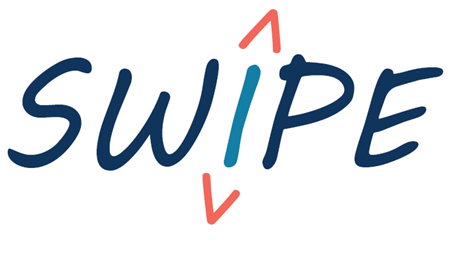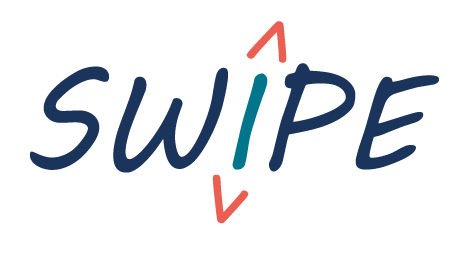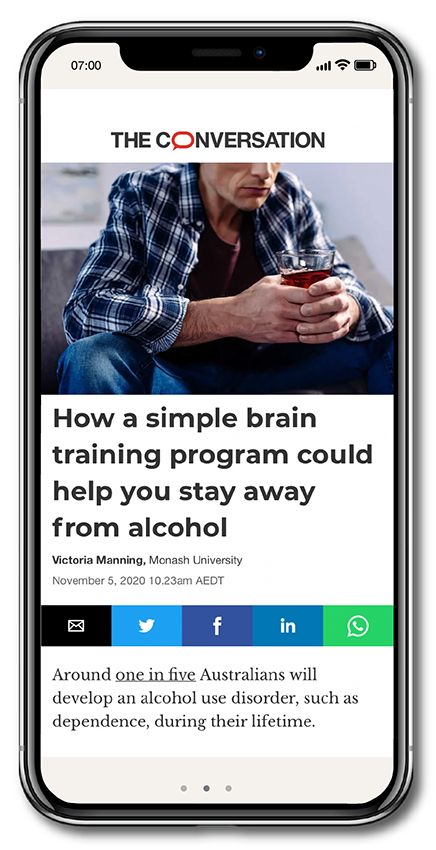How does it work?
SWiPE uses evidence-based brain training to help users avoid alcohol cues and strengthen conscious control over their drinking.
Watch this 1-minute animation to find out how it works!
The Science
SWiPE uses a form of brain training known as Cognitive Bias Modification (CBM).
With regular drinking our brains adapt so we more readily notice and respond to things associated with alcohol (like the sight of a pub, or an alcoholic drink in an advert or on TV). As a result, we develop a cognitive bias to these alcohol cues, where our response to them becomes more automatic. Since our brains take short-cuts to reward/pleasure, the mere presence of alcohol cues alone can trigger the desire to drink.
By being trained to repeatedly respond to alcohol cues with an avoidance movement using CBM , we can reduce our automatic response to them in real life. In randomised controlled trials conducted by Monash University, just 4 sessions of CBM reduced the likelihood of relapsing after detoxification treatment by 17-30%.
As a smartphone-app, SWiPE makes CBM available for a broad range of drinkers, including those not wanting or needing treatment, but wanting to cut-down or take a break from drinking. The app enables users to personalise their training by using images they have selected that represent alcoholic drinks or brands they wish to avoid, and images that represent positive behaviours and activities they wish to do more of (e.g., hobbies and sports, spending time with friends and family, meditation, etc), which aims to strengthen motivation for drinking less.
The Evidence
Click the links below to read scientific and media papers on the evidence for Cognitive Bias Modification on reducing or quitting alcohol
Featured on:





